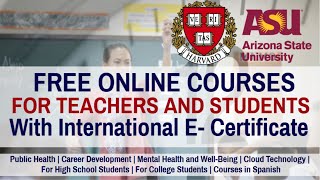
Iowa grants are available to both nonprofit organizations and government agencies. These grants can enhance the quality life in a particular area. An area governing body reviews applications. These grants are intended to improve the quality of Iowans' lives. All organizations may be eligible, however. You should contact your local government to find out if your organization is eligible.
Agricultural concepts teach math, science, writing, and literacy.
Teachers have the chance to increase their knowledge in agriculture and food system by using agricultural concepts as a way to enrich core academic subjects. There are many grants that can be used to assist teachers with innovative projects that integrate agricultural concepts into the classroom. Teachers who use agricultural concepts in the classroom to enrich core curriculum subjects will receive financial support through the National Agriculture in the Classroom Organization, and the CHS Foundation.
The program aims at increasing agricultural literacy, knowledge, understanding, appreciation of food and farming. The program is used by nearly 5 million students every year, and 60,000 teachers through conferences, field trips and workshops. The curriculum includes lesson plans based on standards, as well as supplementary materials.

Teachers interested in integrating agriculture into the classroom should attend the National Agriculture in the Classroom Conference from June 19-21 in Little Rock. The conference offers workshops, web materials, and an Awards program. This conference provides educators with a unique opportunity to learn how agriculture can be used to enrich the core curriculum.
The Department of Agriculture and Food Science wants to cultivate a new generation of learners who are engaged in healthy eating and good farming practices. It also plans to integrate projects and learning-by doing into the classroom. These strategies allow students to learn more about agriculture and the other subjects.
Through the ages, agriculture has experienced significant change. Modern agriculture is constantly improving. Scientists are working to create higher yield varieties of crops that require less pesticides and fertilizers. In order to feed the hungry, scientists are also trying conservation.
A healthy lifestyle requires a solid understanding of agricultural concepts. One example is that a farmer could increase his productivity simply by growing a new crop each season. A farmer can cultivate many crops, depending upon the climate. Aside from this, they can grow and preserve crops in an open field.

People hunted before agriculture. However, new agricultural inventions and techniques allowed people to settle in communities. Before the invention the tractor, farmers used to plant seeds by hand. This process allowed them to cultivate small parcels of land. For clearing the soil and breaking up the roots, farmers used axes as well as digging sticks. Later, iron, bone, stone and bronze became more efficient tools. People also invented new ways to store food. Clay pots were first used for food storage.
FAQ
How do I select my major?
Students choose their majors depending on their interests. Students may choose to major in the subject they are most passionate about because it is easier than learning something else. Some people want to work in a field that has no job opportunities. Others are motivated to make a living while studying a major. Whatever your reason, you should think about what type of job you would like to have after graduation.
There are many ways to get information about different fields of study. You could talk to someone in your family or friends about their experiences in these areas. You can check newspapers and magazines to see if any jobs are listed. Talk with a guidance counselor at your high school to ask about possible careers. Visit Career Services at the local library or community centre. Your local library has books on a variety of topics. Use the Internet to search for websites related to specific careers.
What's the difference between a university and a college?
A university is an academic institution providing higher education. It offers courses in various areas, both undergraduate and postgraduate.
A college is usually smaller than a university and has a lower reputation. While it may offer fewer programs, many colleges have their own specialist departments.
What are the main types of early education?
There are many different ways to describe early childhood education. The most common ones include:
-
Preschool - Children ages 2 to 5
-
PreKindergarten: Children 4-6 years old
-
Head Start/Headstart for Children Ages 0-3
-
Day Care/ Daycares - Children ages 0 to 5
-
Child Care Centers for Children from 0-18
-
Family Childcare - Children between 0 and 12 Years Old
-
Home Schooling - Children ages KG to 16
What are some ways to get scholarships?
To help pay college expenses, scholarships are grants. There are many types of scholarships available. These are:
-
Federal Grants
-
State Grants
-
Student Loans
-
Work Study Programs
-
Financial Aid
Federal grants are direct from the U.S. government. Most federal grants require applicants to meet certain requirements. Financial need is one example.
Individual states can offer grants to state governments. Some states offer these funds based on financial need; others award money for specific reasons.
Banks and other lending agencies can provide student loans. Students usually borrow money to cover tuition and living costs.
Work-study programs encourage employers to hire qualified student workers. Employers must pay at least the minimum wage to their employees.
Financial aid is available to help low-income families pay for college. It covers all or most of the tuition costs.
Statistics
- In most developed countries, a high proportion of the population (up to 50%) now enters higher education at some time in their lives. (en.wikipedia.org)
- These institutions can vary according to different contexts.[83] (en.wikipedia.org)
- Globally, in 2008, around 89% of children aged six to twelve were enrolled in primary education, and this proportion was rising. (en.wikipedia.org)
- They are also 25% more likely to graduate from high school and have higher math and reading scores, with fewer behavioral problems,” according to research at the University of Tennessee. (habitatbroward.org)
- Among STEM majors, that number is 83.5 percent. (bostonreview.net)
External Links
How To
Why homeschool?
When choosing whether to homeschool or send your child to school, there are several factors to consider.
-
Which type of education do YOU want for your child's future? Are you seeking academic excellence? Or social skills development for your child?
-
What degree of involvement would you prefer to have in your child’s education. Is it better to be kept up-to-date about your child's activities? Would you rather keep your child informed?
-
Are there special needs that your child has? Is your child a special needs child?
-
Will you be able to manage your child's schedule? Do you have the time and commitment to teach your child at home each day?
-
What subjects will you be covering? Math, science, language arts, art, music, history, geography, etc. ?
-
How much do you have to pay for your child's education
-
Is it possible for your child to start school at an early age?
-
Your child will need a place to live. This includes finding space large enough to house your child, as well providing facilities such as bathrooms and kitchens.
-
What's your child's average age?
-
When does your child go to bed?
-
When does he/she finally wake up?
-
How long does the journey take from point A, to point B?
-
Is your child's primary school close to you?
-
How far is it from your home to your child's school.
-
How will you transport your child to and from school?
-
What are the benefits of homeschooling?
-
What are the downsides?
-
Who will supervise your child when he/she is outside?
-
What are your expectations from your child?
-
Which type of discipline would you prefer?
-
What curriculum will you use?
There are many reasons that people homeschool their children. Here are some of the reasons.
-
Your child has learning disabilities that prevent him/her from attending traditional schools.
-
You would like to offer your child an alternative educational system.
-
You would like more flexibility with your scheduling.
-
Avoid high tuition fees
-
Your child is receiving an education of a higher quality than the one he/she could get in a traditional school.
-
You think you can teach your child better than the teacher in a traditional school setting.
-
You don’t like the way that schools work.
-
You are uncomfortable with the rules and regulations in the school system.
-
You want your child to develop a strong work ethic.
-
You want the freedom to choose which courses your child takes.
-
You want to give your child individual attention.
Other benefits of homeschooling include the following:
-
It is not necessary to worry about uniforms and books, pencils, pencils, paper, or other supplies.
-
You can customize your child's education according to his/her interests.
-
Homeschooling allows parents the opportunity to spend time together with their children.
-
Students who are homeschooled tend to learn more quickly than peers because they don't have to be distracted by their peers.
-
Many homeschoolers score higher in standardized tests.
-
Families who homeschool tend to be happier in general.
-
Homeschool students are less likely not to drop out.